Hyperspectral imaging technology is characterized by the use of a large number of continuous narrowband wavelengths to process image data and gain comprehensive spectral data across many bands in the imaging process. It is a mix of imaging and spectroscopy technology.
Short-Wave Infrared Explained
Shortwave infrared refers to the band 1-3 μm. As in visible light imaging, short-wave infrared imaging uses light reflected on an object’s surface. Different substances have different reflection spectrum properties, making analyzing and identifying these distinct characteristics possible.
Shortwave infrared also has powerful penetration and unique absorption properties for different materials. In some cases, shortwave infrared lenses can unveil different visual properties than visible light lenses.
For instance, the absorption peak of water molecules in some short-wave infrared bands is very powerful. This spectral trait means that short-wave infrared is particularly sensitive to meat, vegetables, fruits, and other objects, which is a crucial application principle of SWIR technology in detection.
Integrating short-wave infrared technology with a hyperspectral camera can functionalize the properties of both technologies, allowing them to assess the observed target with more precision and play a critical role in other fields.
Applications of Short-Wave Infrared Hyperspectral Cameras
Using SWIR’s strong water absorption peak, SWIR hyperspectral cameras can identify the ripeness of fruits and vegetables, scan for foreign matter in meat, and surveil the health status of vegetation to evaluate drought conditions.
In addition, the characteristic parameters of reflection spectra of different minerals vary based on specific rules in shortwave infrared. Shortwave infrared spectroscopy can distinguish and classify mineral species quickly and effectively, markedly enhancing the efficiency of geological exploration.
Shortwave infrared hyperspectral cameras also have critical applications in analyzing art, archaeology, detecting drugs, and other domains.
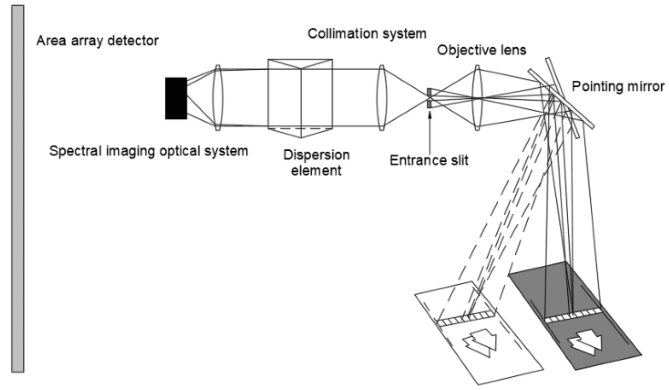
Hyperspectral imaging optical system. Image Credit: Avantier Inc.
Hyperspectral Imaging Optical System
The main components of a SWIR hyperspectral camera are an objective lens, a spectroscopic system, and a sensor.
Dispersive hyperspectral cameras usually split light via a grating or prism. The objective lens sends the target object’s image to the spectrometer, which obtains continuous single-wavelength spectral data through the dispersion element and then relays the image onto the sensor.
Lastly, a computer integrates and analyzes the collected spectral data.
Specifications
Source: Avantier Inc.
| |
|
| Wavelength range |
1000-2500 nm |
| F# |
2.8 |
| EFFL |
30 mm |
| FOV |
±15° |
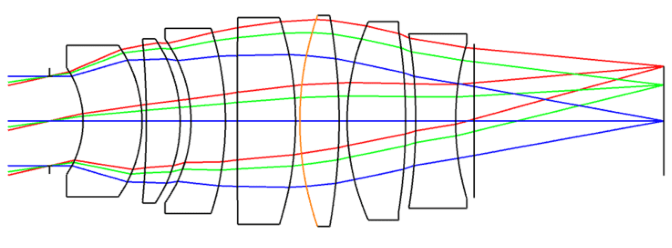
Short-Wave Infrared lens. Image Credit: Avantier Inc.
The imaging lens is a crucial component of a hyperspectral camera. To facilitate the collection of more spectral data, the objective lens of the general hyperspectral camera covers a wide band and a small volume that is easy to integrate. The following is a project of a short-wave infrared hyperspectral camera lens.
This objective lens encompasses the band of 1000-2500 nm, and the glass material has a high transmittance in this band, which is applicable for short-wave infrared use cases.
Furthermore, the design performance of the objective lens is in proximity to the diffraction limit, and the color difference correction is excellent.
MTF Performance at Different Temperatures
The Modulation Transfer Function (MTF) graph is a crucial metric indicating a lens’s ability to rectify nuanced details. Higher MTF values suggest better performance in terms of image sharpness and contrast.
Lens Performance Evaluation at 20°C
The Modulation Transfer Function (MTF) graph below displays the lens’s performance at 20 °C. The MTF is a critical metric indicating the lens’s capacity to rectify nuanced details. Typically, a higher MTF value suggests higher performance in image sharpness and contrast.
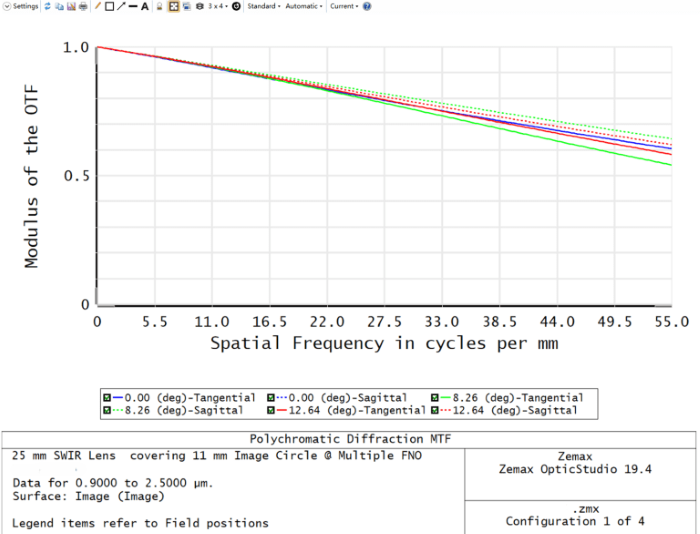
MTF@20 °C. Image Credit: Avantier Inc.
Performance Across Different Temperatures
Hyperspectral cameras are commonly utilized in airborne settings and have a sizable operating temperature span. Thus, the objective lens design should take into account the heat dissipation treatment. Below is the design performance at different temperatures.
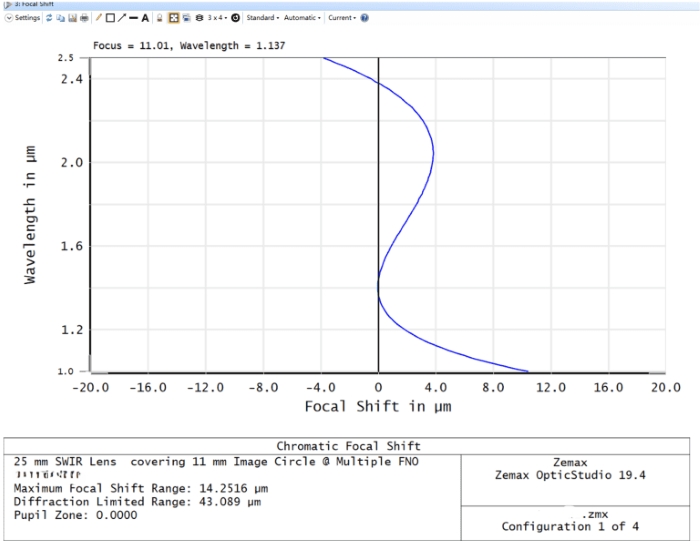
Chromatic focal shift. Image Credit: Avantier Inc.
Lens Performance at Extreme Temperatures
The proceeding graphs show how the lens performs at the temperature extremes of -20 °C and 50 °C. The MTF values suggest how well the lens preserves image quality at different spatial frequencies in various temperature conditions.
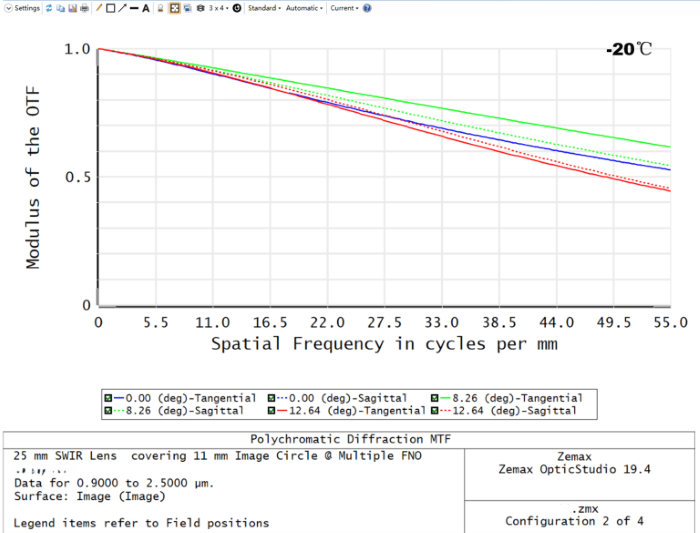
MTF@-20° C & 50 °C. Image Credit: Avantier Inc.
Versatility for SWIR Hyperspectral Camera Lenses
The SWIR hyperspectral camera lens is compact and space-efficient, measuring less than 50 mm in length. It offers a field of view of ±15 ° and covers a substantial scanning area.
Encompassing a wide band of 1000-2500 nm, it is applicable for shortwave infrared use cases. Moreover, the thermal difference is rectified, making it adaptable to multiple temperature environments.
This SWIR hyperspectral camera lens is agile and highly efficient, making it suitable for multiple use cases, ranging from agricultural monitoring to geological exploration, art analysis, and more.
Its delivery of sharp, high-contrast images under varying conditions reinforces its utility in comprehensive spectral analysis, highlighting the key role of hyperspectral imaging technology in today’s scientific and industrial domains.

This information has been sourced, reviewed and adapted from materials provided by Avantier Inc.
For more information on this source, please visit Avantier Inc.